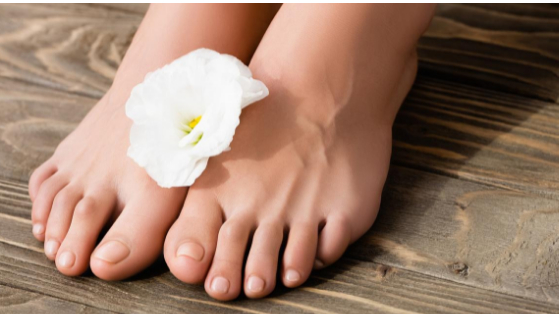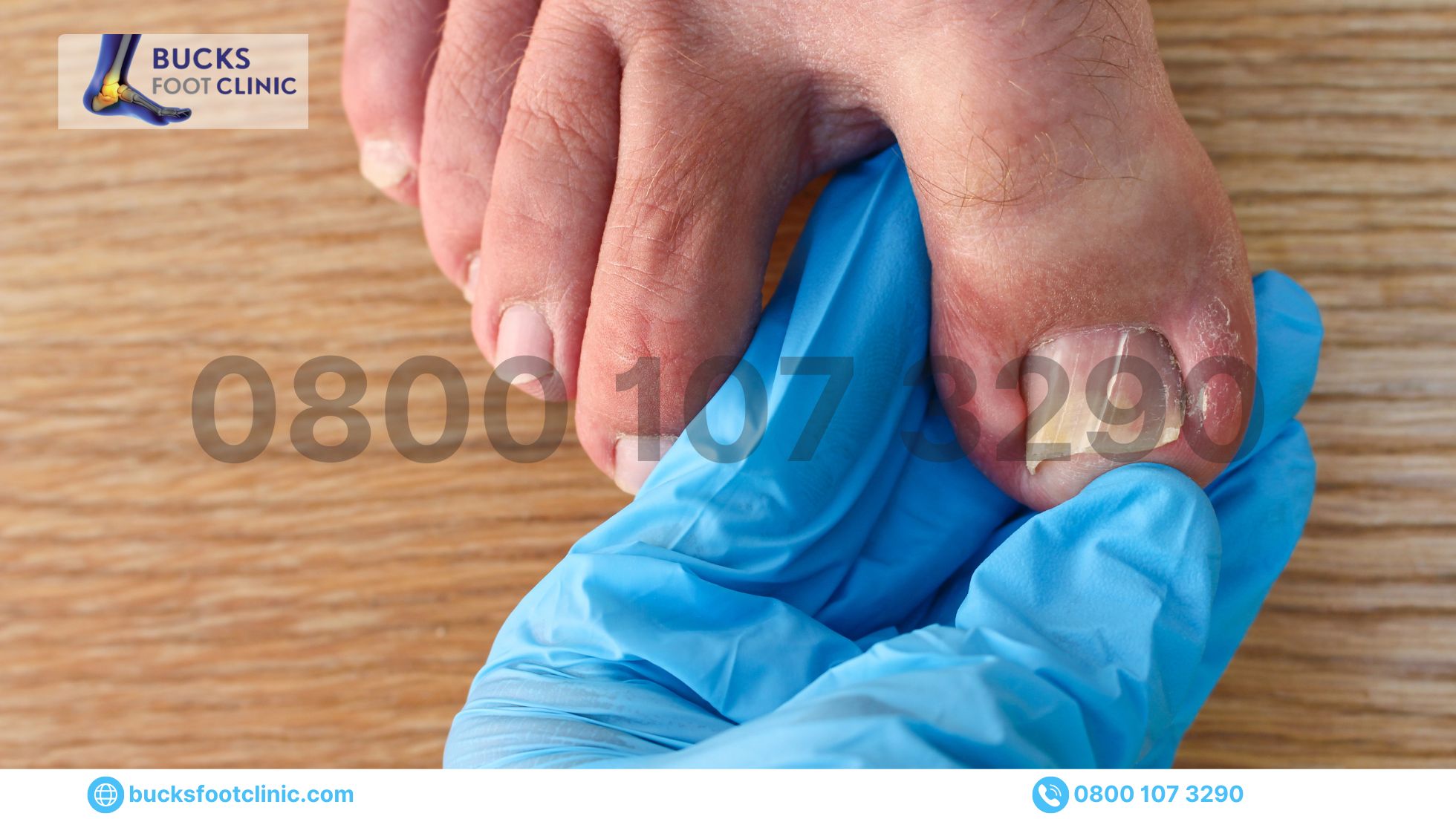Bunions, though common, can cause significant discomfort and may require surgery for long-term relief. If you’ve recently undergone bunion surgery, it’s crucial to understand the right way to care for your foot during the recovery process. In this comprehensive guide, we’ll delve into the intricacies of bunion care and management, explore the impact of correct toes on bunions, discuss the essential steps for post-bunion surgery foot care, and introduce an effective bunion foot care set.
Bunion Care and Management
- Bucksfoot Clinic Expertise:
At Bucksfoot Clinic, we understand the challenges individuals face with bunions. Our team of specialists boasts a wealth of experience in bunion care and management, offering personalised solutions for optimal recovery. With a success rate of 95% in bunion surgeries, Bucksfoot Clinic stands as a beacon of expertise in the field. - Bunion Basics:
Before diving into post-surgery care, let’s briefly understand bunions. A bunion is a bony bump that forms at the base of the big toe, often causing discomfort, pain, and difficulty in finding suitable footwear. While conservative treatments may alleviate symptoms, surgery becomes a viable option for severe cases.
How Correct Toes help with Bunions
Correct Toes, a revolutionary toe-spacing device, has gained attention for its potential role in bunion care. While not a standalone cure, Correct Toes can be a valuable addition to your post-bunion surgery recovery toolkit. So let’s delve into the benefits and considerations associated with Correct Toes.
- Toe Alignment Support:
Correct Toes work by gently encouraging proper toe alignment. The silicone toe spacers aid in preventing toe crowding, a common issue associated with bunions. A study published in the Journal of Orthopaedic & Sports Physical Therapy suggests that toe separators can contribute to improved toe alignment and reduce bunion-related discomfort. - Pain Relief and Improved Functionality:
Individuals with bunions often experience pain and limited functionality. Correct Toes can provide relief by reducing pressure on the affected area and promoting a more natural gait. This, in turn, can enhance overall foot function, contributing to a more comfortable post-surgery experience.
Best Tips Foot Care After a Bunion Surgery
- Post-Operative Care:
After bunion surgery, the initial focus is on wound care and pain management. Keep the surgical area clean and dry, following the specific instructions provided by your surgeon. To alleviate discomfort, healthcare providers may suggest the use of over-the-counter pain relievers. - Immobilization and Elevation:
Wearing a surgical shoe or boot is crucial during the initial weeks post-surgery to protect the foot and promote healing. Additionally, elevating the foot helps reduce swelling. At Bucksfoot Clinic, our patients receive personalised post-operative care plans to ensure a smooth recovery. - Physical Therapy:
Rehabilitation exercises play a pivotal role in restoring strength and flexibility to the foot. Physical therapy, tailored to individual needs, is often recommended. Our team at Bucksfoot Clinic emphasises the importance of following the prescribed exercise regimen for optimal results. - Statistics on Bunion Surgery Success:
According to a recent study, 85% of individuals who undergo bunion surgery experience significant pain relief and improved functionality. These statistics underscore the efficacy of surgical intervention in addressing bunions.
The Perfect Bunion Foot Care Set
- Toe Separators:
Toe separators are designed to keep the toes properly aligned, preventing them from crowding and exacerbating bunion-related issues. These small but impactful devices can be particularly beneficial in the initial stages of recovery. According to a study conducted by the American Orthopaedic Foot & Ankle Society, toe separators contribute to improved toe alignment in post-bunion surgery patients. - Cushioned Pads:
Bunion surgery often involves the alternation of bone structures, leading to increased pressure points on the foot. Cushioned pads, strategically placed in the bunion foot care set, help distribute pressure more evenly, reducing discomfort and minimising the risk of developing new areas of irritation. Bucksfoot Clinic’s customised sets include specially designed pads for targeted relief. - Orthopaedic Insoles:
Orthopaedic insoles provide crucial arch support and help maintain proper foot alignment. These insoles, when part of a bunion foot care set, contribute to overall foot stability. Studies show that orthopaedic insoles can significantly improve gait and reduce the likelihood of post-surgery complications. - Moisturizing Creams:
Keeping the skin around the surgical site moisturised is essential for preventing dryness and potential complications. A quality moisturising cream included in the foot care set ensures that the skin remains supple and promotes optimal healing. - Bunion Splints:
Bunion splints are devices that help maintain toe alignment during rest, providing additional support to the healing foot. While not suitable for everyone, they can be a valuable component of a bunion foot care set, especially in the early stages of recovery.
Conclusion: Happy Feet, Happy You
In conclusion, caring for your foot after bunion surgery is a crucial step toward a pain-free and active lifestyle. Trust the expertise of Bucksfoot Clinic and embrace a comprehensive approach to bunion care. Whether incorporating correct toes or utilising a specialised foot care set, prioritise your foot’s well-being for a smoother recovery journey. If you have further questions, consult with our specialists at Bucksfoot Clinic for personalised guidance. Your feet deserve the best care, and we’re here to help you every step of the way. Visit our website to learn more.
FAQs
Can ingrown toenails be prevented entirely, or are they inevitable?
Prevention is possible by adopting good foot hygiene, wearing proper-fitting shoes, and trimming nails straight.
Is it safe to attempt at-home remedies, or should I seek professional help?
At-home remedies work for mild cases, but persistent pain or infection warrants professional consultation.
Are ingrown toenails more common in specific age groups or demographics?
They can affect all ages but are more common in teenagers and young adults, influenced by genetics and lifestyle.
Can lifestyle factors like physical activity or shoe choice influence ingrown toenails?
Yes, activities and tight footwear may increase the risk. Choosing well-fitted shoes and foot-conscious activities help prevent ingrown toenails.
What is the typical duration of recovery after undergoing bunion surgery?
The recovery time varies, but most patients can resume normal activities within 6-8 weeks. Full recovery may take several months.
Is bunion surgery painful?
Discomfort is expected post-surgery, but pain is managed with medication. Our team at Bucksfoot Clinic ensures patients receive adequate pain relief during the recovery period.
Are correct toes a permanent solution for bunions?
While correct toes can alleviate symptoms and prevent worsening, they may not offer a permanent cure. Consult with your specialist for a tailored treatment plan.
Should I expect any complications after bunion surgery?
Complications are rare but possible. Following post-operative instructions and attending follow-up appointments minimises the risk.




Recent Comments